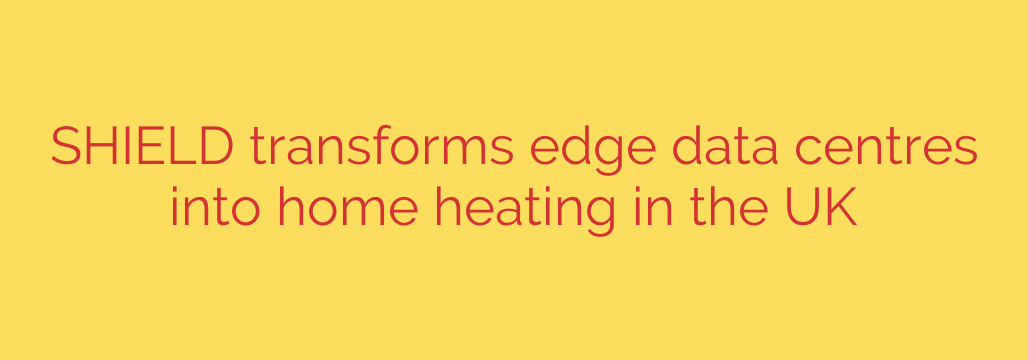
The Future of Home Heating? How Data Centres Are Slashing UK Energy Bills
As energy prices continue to be a major concern for households across the UK, an innovative solution is emerging from one of the most unlikely of places: the digital world. The vast server farms that power our online lives, known as data centres, generate an enormous amount of heat. Traditionally, this heat is treated as a waste product, vented into the atmosphere using costly and energy-intensive cooling systems.
But what if that waste heat could be captured and repurposed? A pioneering approach is now turning this problem into a powerful solution, transforming compact data centres into a source of low-cost heating for UK homes. This technology represents a major step forward in creating a circular economy, tackling fuel poverty, and building a more sustainable digital infrastructure.
The Problem of Wasted Digital Heat
Data centres are the backbone of the internet, housing the high-performance computers that process, store, and share our data. From streaming movies to sending emails, every online action requires energy, and a significant byproduct of that energy consumption is heat. To prevent servers from overheating, data centre operators spend a fortune on cooling technologies like air conditioning and liquid cooling systems.
This process is incredibly inefficient. Not only does it consume additional electricity to run the cooling equipment, but it also discards a valuable thermal resource. In a world searching for green energy solutions, this wasted heat has long been seen as a missed opportunity.
An Innovative Solution: Servers as Radiators
The new model works by fundamentally rethinking the design and location of data centres. Instead of building massive, isolated facilities, the focus is on deploying smaller, modular “edge” data centres directly inside residential and commercial buildings.
Here’s how this groundbreaking system functions:
- Decentralised Data: Small, powerful data processing units are installed in locations like the utility rooms of apartment buildings. These “edge” locations bring data processing closer to the end-user, improving internet speeds and responsiveness.
- Heat Capture Technology: The heat generated by the servers is captured, typically using a liquid cooling system. Instead of being discarded, this hot liquid is transferred to the building’s domestic hot water system via a heat exchanger.
- Low-Cost Heating and Hot Water: The captured thermal energy is then used to heat water for residents’ radiators and taps. This provides a consistent and reliable source of heating, significantly reducing the building’s reliance on traditional gas boilers or electric heaters.
This closed-loop system creates a symbiotic relationship: the data centre gets its essential cooling for free, and the residents receive a highly subsidised or even free source of heat.
The Triple-Win Benefits
This approach offers compelling advantages for residents, the environment, and the technology sector.
1. Combating Fuel Poverty for Residents
For people living in social housing or new-build apartments, this technology can be life-changing. By providing a substantial portion of their heating and hot water needs, it directly slashes household energy bills. In an era of rising living costs, this offers tangible financial relief and helps ensure families can afford to stay warm.
2. Slashing Carbon Emissions
The environmental benefits are immense. By eliminating the need for traditional, energy-hungry data centre cooling systems, the carbon footprint of data processing is dramatically reduced. Furthermore, by replacing fossil-fuel-based home heating, the model significantly lowers a building’s overall emissions, contributing to the UK’s net-zero targets.
3. Building a Smarter, Faster Digital UK
Placing data centres at the “edge” of the network—closer to where people live and work—is crucial for the next generation of technology. This infrastructure supports the rollout of 5G, the Internet of Things (IoT), and smart city applications by reducing latency and improving data processing speeds.
What This Means for the Future
This fusion of digital infrastructure and residential utilities is more than just a clever idea; it’s a practical blueprint for sustainable urban development. For developers and housing associations, it presents an opportunity to build greener, more affordable homes with a built-in technological advantage. For residents, it promises a future with lower bills and a smaller environmental impact.
As this technology scales across the UK, it could play a vital role in modernising our energy grid, improving digital connectivity, and making our communities more resilient and sustainable for years to come.
Source: https://datacentrereview.com/2025/10/uk-power-networks-shield-turns-edge-data-centres-into-home-heating-systems/








